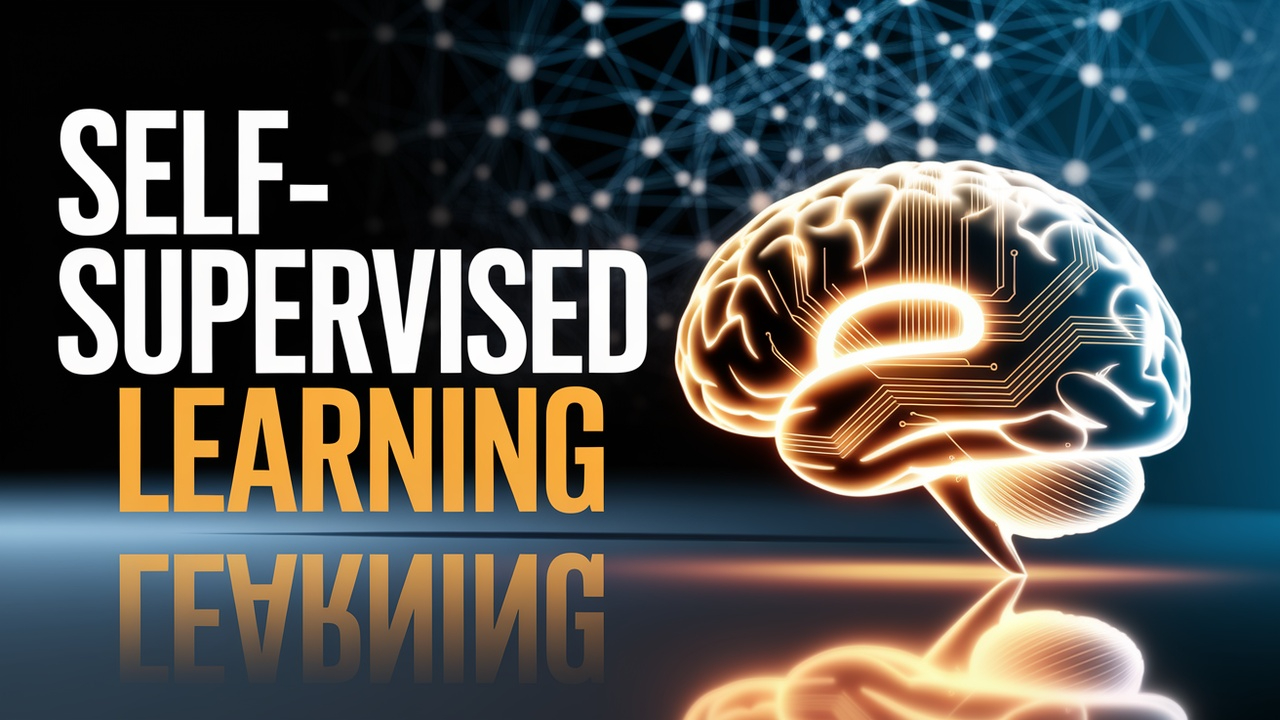
This comprehensive course delves into self-supervised learning, a cutting-edge approach in machine learning that leverages unlabeled data to train models. Participants will explore foundational concepts, advanced techniques, and practical applications, equipping them with the skills to implement self-supervised learning in real-world scenarios.
Course Levels
-
Level 1: Introduction to Self-Supervised Learning
This level introduces the fundamental concepts of self-supervised learning, its importance, and its applications in the field of machine learning.
-
Level 2: Core Techniques in Self-Supervised Learning
In this level, participants will learn about the core techniques used in self-supervised learning, including contrastive learning and generative modeling.
-
Level 3: Advanced Self-Supervised Learning Techniques
This level covers advanced techniques and architectures that enhance the performance of self-supervised learning models.
-
Level 4: Implementing Self-Supervised Learning
This practical level focuses on the implementation of self-supervised learning techniques using popular frameworks and libraries.
-
Level 5: Real-World Applications of Self-Supervised Learning
In this level, participants will explore various real-world applications and case studies of self-supervised learning across different domains.
-
Level 6: Future Trends and Research Directions
This level discusses the future of self-supervised learning, emerging trends, and ongoing research challenges in the field.
Course Topics
-
Setting Up Your Environment
# Setting Up Your Environment Setting up your environment is a crucial step when implementing self-supervised learning (SSL) algorithms. A well-configured environment ensures that you can efficiently...
-
Deploying Self-Supervised Models in Production
# Deploying Self-Supervised Models in Production Deploying self-supervised models into a production environment is a critical step that ensures the model can operate effectively in real-world setting...
-
Transformers in Self-Supervised Learning
# Transformers in Self-Supervised Learning Self-supervised learning (SSL) has emerged as a powerful paradigm in machine learning, enabling models to learn representations from unlabeled data. Among t...
-
Fine-Tuning Pretrained Models
# Fine-Tuning Pretrained Models Fine-tuning is a crucial step in the machine learning pipeline, especially when leveraging self-supervised learning techniques. In this section, we will explore the co...
-
Key Applications of Self-Supervised Learning
# Key Applications of Self-Supervised Learning Self-supervised learning (SSL) has emerged as a transformative approach in various fields of artificial intelligence, especially in natural language pro...
-
Generative Models Overview
# Generative Models Overview Generative models are a class of statistical models that are capable of generating new data points that resemble a given dataset. They learn the underlying patterns of th...
-
Challenges and Limitations
# Challenges and Limitations of Self-Supervised Learning Self-supervised learning (SSL) is a rapidly evolving field that has shown promise in various applications of machine learning, particularly in...
-
MoCo: Momentum Contrast
# MoCo: Momentum Contrast Momentum Contrast (MoCo) is a groundbreaking approach in the realm of self-supervised learning, particularly for contrastive learning methods. It aims to improve the perform...
-
Building a Simple Self-Supervised Model
# Building a Simple Self-Supervised Model In this section, we will explore how to build a simple self-supervised learning model using PyTorch. Self-supervised learning is a type of unsupervised learn...
-
Masked Language Modeling
# Masked Language Modeling Masked Language Modeling (MLM) is a powerful self-supervised learning technique primarily utilized in natural language processing (NLP). It involves the prediction of maske...
-
The Role of Self-Supervised Learning in AI Ethics
# The Role of Self-Supervised Learning in AI Ethics Self-supervised learning (SSL) has emerged as a transformative approach in the field of artificial intelligence (AI), enabling models to learn from...
-
Ethical Considerations in Self-Supervised Learning
# Ethical Considerations in Self-Supervised Learning Self-supervised learning (SSL) has gained significant traction in recent years, leading to breakthroughs in various fields such as computer vision...
-
The Role of Augmentations in Training
# The Role of Augmentations in Training In the realm of self-supervised learning, data augmentations play a crucial role in enhancing the model's ability to generalize well from the training data. Th...
-
Current Research Trends in Self-Supervised Learning
# Current Research Trends in Self-Supervised Learning Self-supervised learning (SSL) has gained significant traction in recent years, particularly in the fields of computer vision and natural languag...
-
Computer Vision Applications
# Computer Vision Applications Computer vision is a field of artificial intelligence that enables machines to interpret and understand visual information from the world. Self-supervised learning (SSL...
-
Self-Supervised Learning for Vision
# Self-Supervised Learning for Vision Self-supervised learning (SSL) has emerged as a pivotal technique in the field of computer vision, enabling models to learn from unlabeled data effectively. This...
-
Evaluation Metrics for Self-Supervised Models
# Evaluation Metrics for Self-Supervised Models Self-supervised learning has gained significant traction in recent years, particularly for its ability to leverage unlabeled data efficiently. However,...
-
SimCLR: A Case Study
# SimCLR: A Case Study SimCLR (Simple Framework for Contrastive Learning of Visual Representations) is a significant advancement in the field of self-supervised learning, particularly for visual task...
-
Multi-Modal Self-Supervised Learning
# Multi-Modal Self-Supervised Learning ## Introduction Multi-Modal Self-Supervised Learning (MMSL) is an advanced technique that harnesses multiple data modalities (such as text, image, audio, etc.) ...
-
Overview of Learning Paradigms
# Overview of Learning Paradigms In the field of machine learning, understanding different learning paradigms is crucial for selecting the right approach for a given problem. This topic provides an o...
- And 10 more topics...